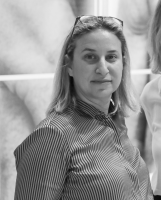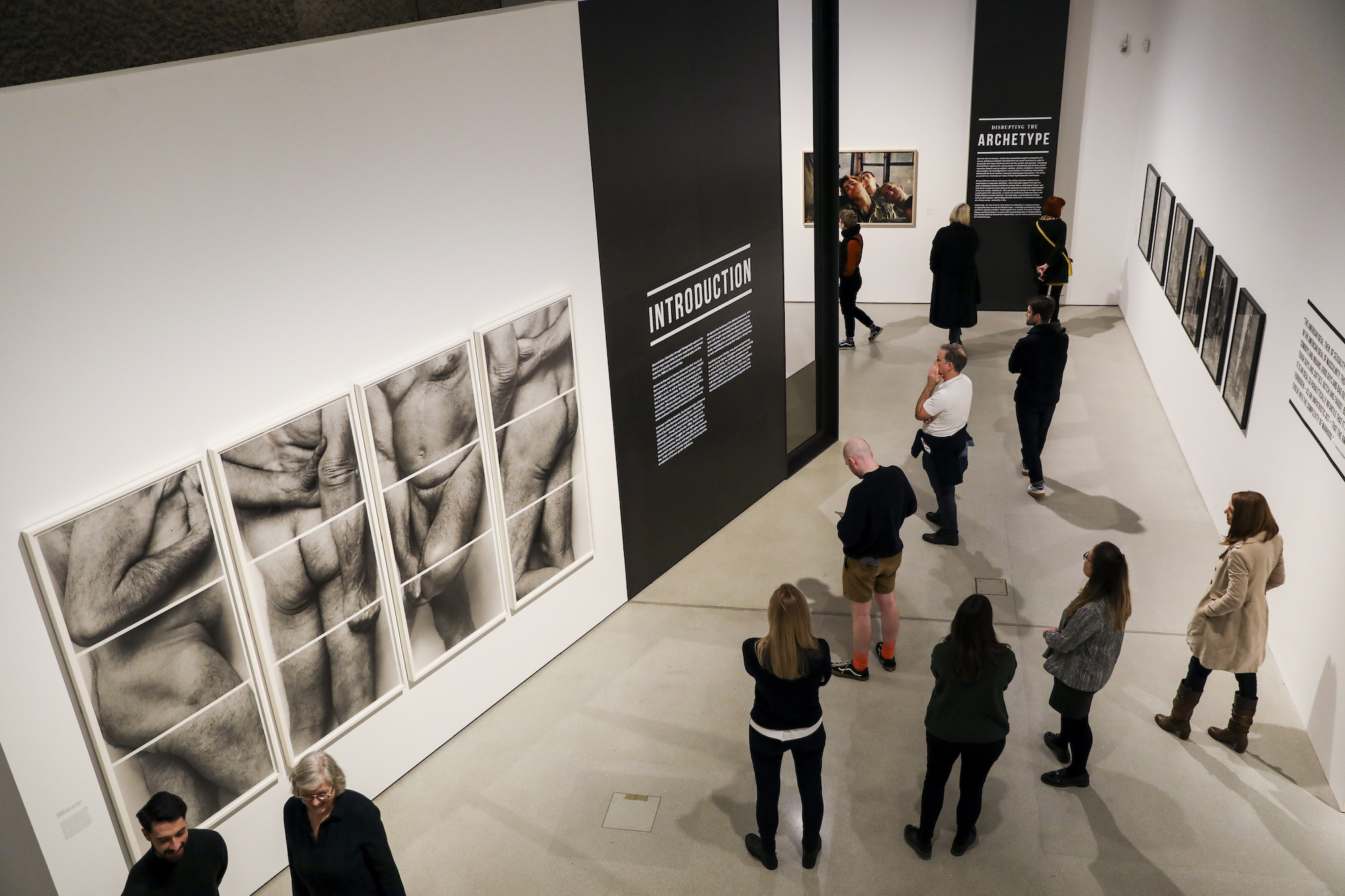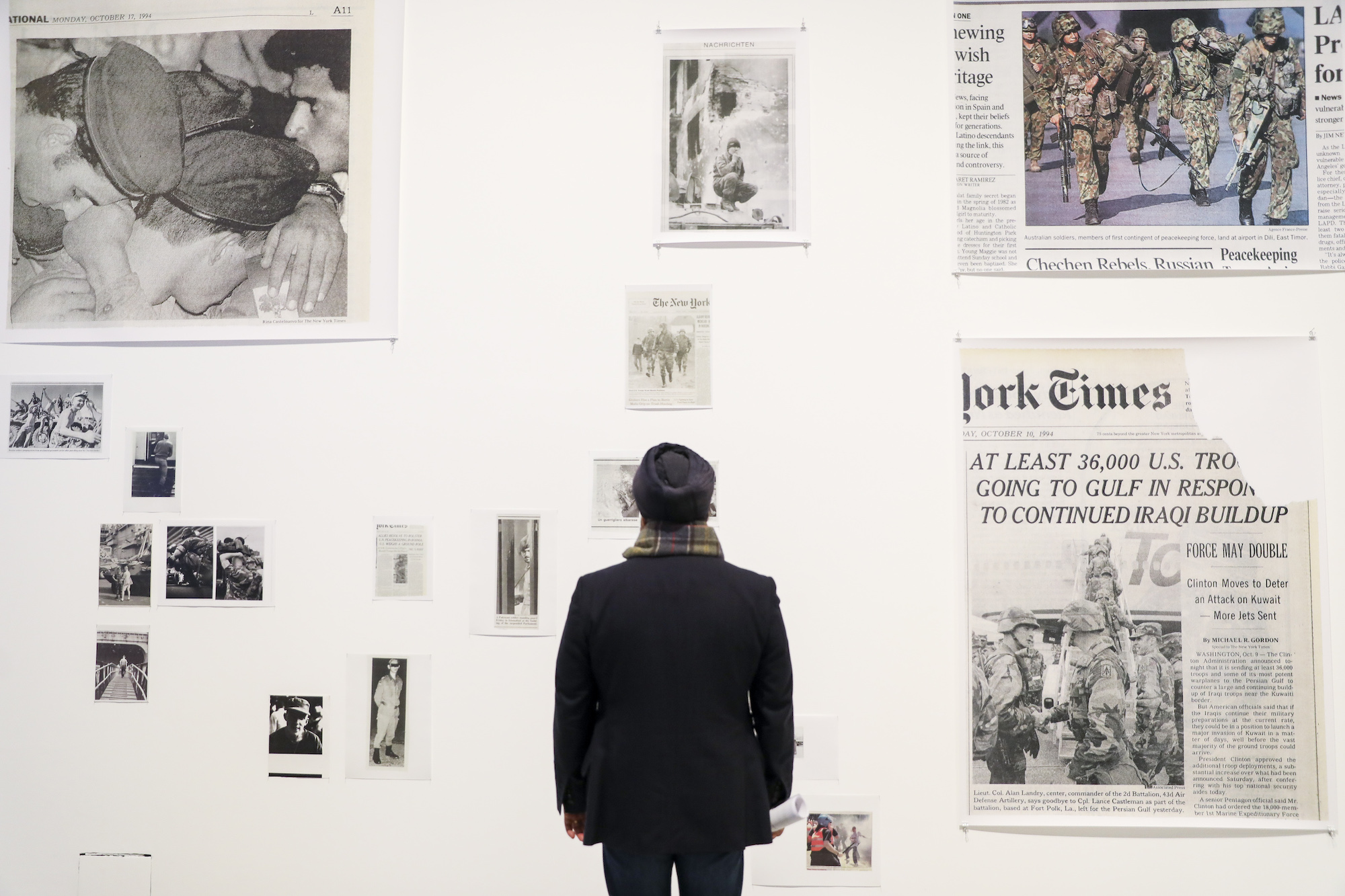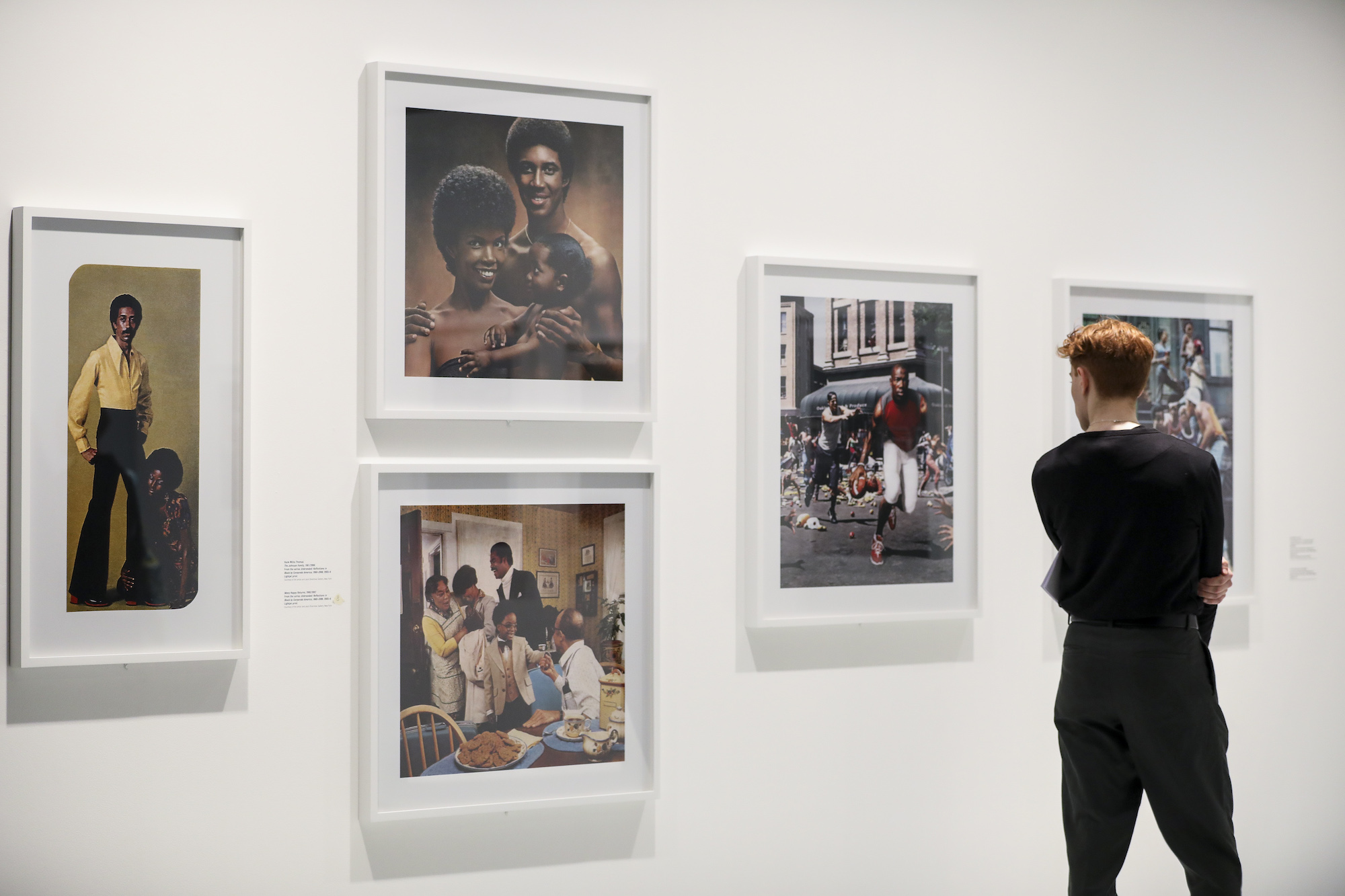
© Tristan Fewings / Getty Images
International Curators Program: Q&A with Alona Pardo
12.1.21
As Curator at the Barbican Art Gallery, Alona Pardo holds one of the most prominent positions in British photographic culture. In advance of participating in Australia Council's International Curators Program at PHOTO 2021, Alona shares insights into her curatorial practice and the artists she is most looking forward to seeing at PHOTO 2021.
Hello Alona, to begin with, please share something interesting about yourself that is not in your bio.
Well that’s a cracking question off the starting blocks and is forcing me to reflect on what makes me interesting! I guess one of the most fundamental building blocks of my identity is that I am an identical twin, a factor that has perhaps fuelled my interest in probing the nature and politics of identity which I have been fortunate enough to explore through some of the exhibitions I’ve curated. It has also provided endless opportunities to indulge my more mischievous and playful side!
Can you tell us about your program at the Barbican Art Gallery?
Although everything is currently in flux, in normal circumstances the Barbican Art Gallery’s programme prides itself on its multidisciplinary and innovative curatorial approach. The programme in the main gallery (a ticketed space that measures over 1500 square metres and is characterised by the brutalist beauty of its architecture) straddles 20th century photography, fine art and design and architecture while also often embracing live performance as a key aspect of our shows. Exhibitions range from major international group thematic exhibitions such as our recent show Masculinities: Liberation through Photography that explored the ways in which masculinity has been coded, performed and socially constructed through film and photography from the 1960s through to the present day, to major retrospective exhibitions by historical figures including Dorothea Lange, Jean Michel Basquiat and Lee Krasner to more contemporary artists such as Christian Marclay, Ragnar Kjartansson and the British choreographer Michael Clark.
In contrast, our cavernous Curve gallery, which as its name suggests take the shape of a 90-metre long crescent, is a free space dedicated to artist commissions. To date we have commissioned over 30 ambitious large-scale works, from multichannel films to miniature paintings to performance and kinetic sculpture by artists including Tomas Saraceno, Yto Barrada, Trevor Paglen, Daria Martin, Walead Beshty and Toyin Ojih Odutola to name just a few.
Ultimately the Barbican is committed to presenting work by a diverse roster of artists who work across photography, film, installation, sculpture, painting and movement that address issues that stretch beyond art and help us to understand the world from new perspectives.
Which exhibition are you most proud of, and why?
Keeping the theme of PHOTO 2021 in mind, I want to reference Richard Mosse’s film Incoming which we presented in the Curve in 2017 and was a co-commission with the National Gallery of Victoria in Melbourne. Incoming is philosophical, historical, poetic, brutal, violent, tender, scopic, sonic, technological and most of all human—and when we presented the work back in 2017 at the height of the migrant crisis in Europe it had a resonance we could not have anticipated. In collaboration with the cinematographer Trevor Tweeten and the composer Ben Frost, Richard spent two-and-a-half years criss-crossing Europe, the Middle East and Africa documenting the migration of people fleeing war, climate change, poverty and persecution, that will no doubt become one of the defining events of the modern era. What set Richard’s ambitious film apart, is that he made the work with an unwieldy imaging technology that is classed as a weapon and in effect sees as a missile sees, which in and of itself is remarkable but it also produced images that are otherworldly, haunting and searing.
Over the last few years, through his filmic and photographic work Richard Mosse has consistently reflected on the assumed truthfulness of photographic representations of war and conflict. His compelling work invariably uses obsolete or technologically advanced film and equipment to represent a subject that is beyond human articulation and the scope of documentary realism.
Responding to a crisis in traditional photo journalism and a growing desire to reconsider history and traditional ways of looking, Mosse’s immersive multi-channel installation for the Curve focused on the global political and humanitarian crisis of displaced people that is almost impossible to describe through traditional means (i.e. news reporting and photo reportage).
By employing a new imaging technology developed for imaging military targets and not a humanitarian crisis the film became a metaphor by which to make the ‘invisible’ displacement of people ‘visible’ whilst also making the point about how ‘normal’ and literal ways of looking are not sufficient to describe the experience of being a migrant.
![Richard Mosse: Incoming The Curve, Barbican Centre 15 February – 23 April 2017 [Richard Mosse: Incoming], The Curve, Barbican Centre, 15 February – 23 April 2017](https://photo.org.au/api/wp-content/uploads/2021/01/DSC_1298-200x134.jpg)
Richard Mosse: Incoming, The Curve, Barbican Centre, 15 February – 23 April 2017
What attracted you to work with photography? And what subjects or ideas are you most interested in addressing in your curatorial practice?
Photography has an unparalleled capacity to reflect and communicate ideas, visually and directly, about the world in which we live. In the hands of great artists, that observation moves far beyond simple description. My aim has been to seek out those artists and present their work regardless of the tradition from which it has arisen.
I think it is almost impossible to work in the world of material visual culture and not engage critically with the pressing issues of our time. To that end, I am particularly interested in thinking critically around identity politics and imagining a world beyond gender or at least one not determined by a strict binary framework, addressing the politics of representation which has come into sharper focus following the historic events of this tumultuous year, questions of justice and of course ecological concerns. My most recent exhibition Masculinities was an exercise in deconstructing hegemonic patriarchy through work by artists from Sunil Gupta to Hank Willis Thomas and Karen Knorr to Richard Billingham and previous shows including Another Kind of Life: Photography on the Margins included artists such as Paz Errazuriz and Dayanita Singh whose work addressed ideas of both fitting in and standing out, in defiance of cultural conventions and as well as the existing visual record.
I recently came across a quote by James Baldwin where he says that ‘artists are here to disturb the peace’. So while it is true that we live in an age where there is a glut of images and information, it strikes me that we need artists more than ever to help distil ideas visually and conceptually, to pierce through conventional ways of looking at the world and offer us new ways of seeing. And so in this ‘post-truth’ era, I think it is incumbent on artists to make work that questions and overturns received truths and in turn curators and other stakeholders in the creative sector need to be supporting artists, whether through newly commissioned work or exhibitions, to bring their work and the ideas embedded in the work, to the attention of as wide an audience as possible.
Which photography exhibition has most inspired or influenced you?
I’m going to answer this question without referencing a photography exhibition as I’m keen to break down the medium specific silo photography, in particular, often inhabits.
As a child I remember visiting the Saatchi Gallery at its original location on Boundary Road in north London and coming across the work of Jeff Koons. There were numerous pieces by him on display, but I distinctly remember a piece in which 3 vacuum cleaners encased in Perspex boxes were stacked one on top of the other and being utterly perplexed. I don’t know why this encounter left such an indelible mark on me, but it certainly left an impression and from that moment on, and being a precocious child, I knew I wanted to understand what it meant and I think that experience was incredibly formative.
However, in terms of ambition and scope, Okwui Enwezor’s 2002 Documenta 11 certainly tops the bill, for me at least, as the most impactful and meaningful exhibition experience. It felt radical in the way it directly addressed socio-political issues of globalisation and advanced a narrative of decolonization, both artistically and historically, that I feel has genuinely impacted on both artistic and curatorial practice. I often return to that exhibition not only because it included remarkable works by Steve McQueen, Chantal Akerman, Fiona Tan and Santu Mofokeng to name a few but also because the curatorial model was collaborative and a shared endeavour and in this day and age, we need to follow that model more than ever to bring in a multiplicity of voices and perspectives.
The theme for PHOTO 2021 is The Truth. In your opinion, what is most interesting or challenging about photography’s relationship with truth at this moment in time?
The newspaper lies
The radio lies
The TV lies
The streets howl with the truth
—Henry Miller
The headlines are full of the ‘death of truth’ and suffice to say that photography has a chequered history with the idea of the ‘truth’. We only have to cast our minds back to Roger Fenton or Robert Capa’s work to understand photography’s complicated relationship with that idea. While we have come to the realisation that photography doesn’t necessarily operate in the service of truth, it does have a unique capacity to reflect ideas back at us, to chart his/herstories, to conspire with the subjects being photographed to tell their own unique story. So for me the power of photography lies in its storytelling ability rather than in the service of ‘truth’ which is itself a construct. The question we need to ask ourselves, is whose ‘truth’ are we listening to or looking at.
You’ll be participating in the Australia Council x PHOTO 2021 International Curators Program and introduced to a selection of Australian photographers and artists. What are you hoping to discover?
The world seems to have radically contracted over the last 12 months and the pendulum seems to have swung back to a more local approach to encountering the world. In light of that I’m really intrigued to discover work by artists, both established and lesser known, whose work has not yet been widely seen in Europe and to learn about the stories they have captured their imagination.
![Image: George Georgiou, [Algiers, New Orleans] from the series [Americans Parade], 2016.](https://photo.org.au/api/wp-content/uploads/2020/02/Algiers-New-Orleans-154-200x133.jpg)
Image: George Georgiou, Algiers, New Orleans from the series Americans Parade, 2016.
Unfortunately you won’t be able to join us in Melbourne for PHOTO 2021 for obvious reasons. Which artist project or exhibition would you most liked to have seen in person?
The programme is so rich it seems criminal to select just a few highlights, however I am really keen to see Layla Stevens film A Line in the Sea as well as Destiny Deacon’s show, I first encountered Deacon’s work at Documenta in 2002 but have seen little work since then. I would have loved to encounter prints from George Georgiou’s series Americans Parade in the street—it seems like the perfect footnote to such a tumultuous year. Sam Contis is a dear friend and I would equally love to see her project in its physical form, equally I have spent many hours pouring over Emmanuelle Andrianjafy’s book Nothing’s in Vain so again the pleasure of seeing the work presented in exhibition form is hugely appealing. There are so many wonderful artists included in this year’s programme from Felicity Hammond to Zanele Muholi and it would have been a pleasure and privilege to encounter all these shows in the flesh.
And finally, any advice for someone who is interested in curating photography?
To be confident in your opinions, to look critically at the world, visit as many exhibitions as possible, engage with current debates around artistic practice and theory and most importantly to independently curate in all sorts of venues, organise talks or write reviews even if only for your own pleasure. It’s all about gaining experience and confronting new scenarios from which we learn more about ourselves. I have always found the most torturous scenarios the ones from which I learn the most!



